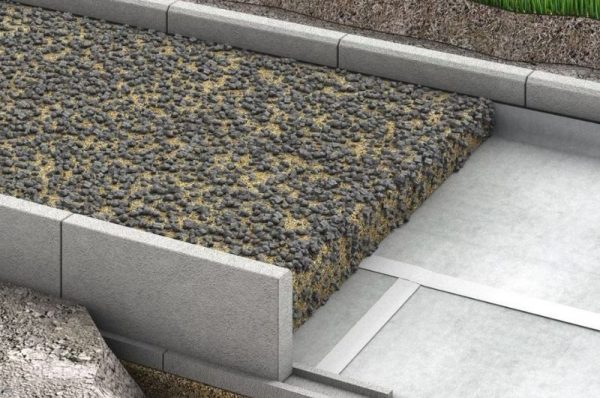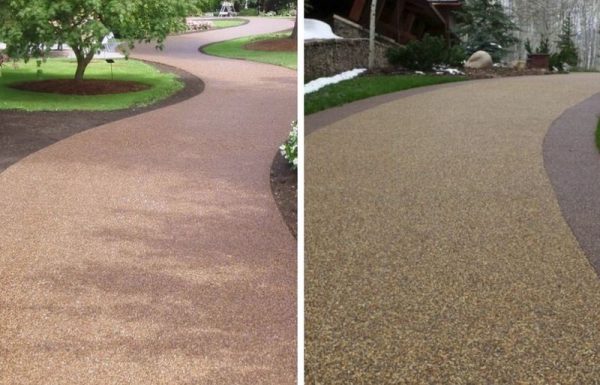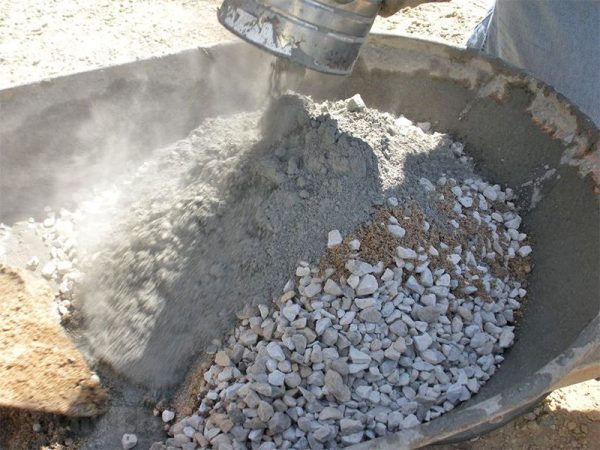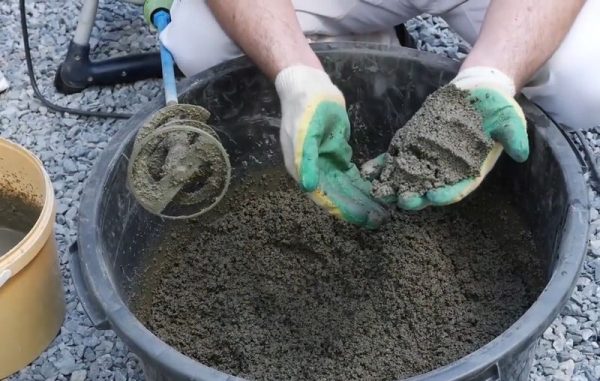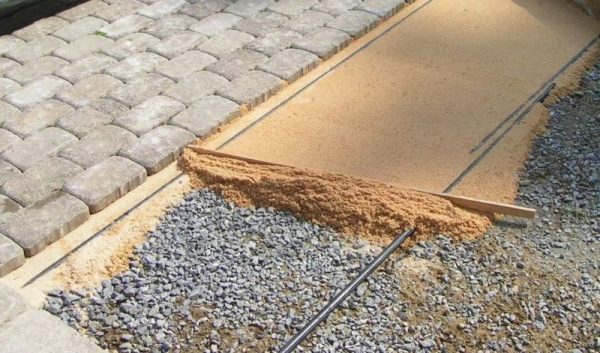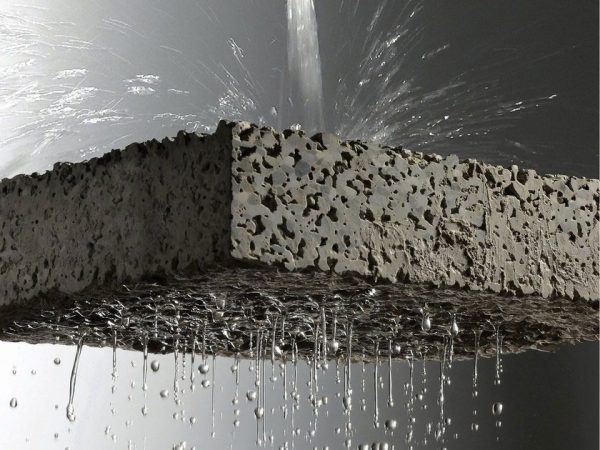Landscaping involves the implementation of a range of organizational measures, including the creation of paths and sidewalks. To do this, there are many options for coatings. One of the most interesting and modern is drainage concrete.
- Drainage concrete and its features
- Scope of application
- Composition
- Technology for creating a drainage concrete track
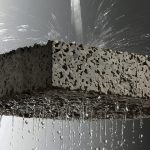
The peculiarity of this material is to ensure unhindered water discharge during rain. Let us consider in more detail what characteristics it has, how to make drainage concrete with your own hands, what it consists of and where it is used.
Drainage concrete and its features
Ecological, organic, water-permeable - under different names one type of concrete is hidden, the main property of which is water absorption. The unique ability of liquid filtration is achieved due to pores that occupy up to 30% of the total concrete mass.
The main use of porous concrete is the creation of garden paths. Due to the drainage effect, the area remains dry even in bad weather, and puddles do not form on its surface. Rainwater passes through porous openings and is instantly absorbed into the ground. And at low temperatures, such a structure does not allow the formation of ice, which significantly reduces the risk of damage to the road surface.
to contents ↑Scope of application
The considered type of coating is intended for the installation of permeable bearing layers, as well as areas with pedestrian loading. It is actively used in the arrangement of summer cottages, parks, recreation areas.
to contents ↑The drainage solution can be used as an independent finish or act as the basis for paving stones and walkways made of paving stones or natural stone.
Composition
The basis of the mixture is coarse aggregate (crushed stone or gravel), the particles of which are bonded to each other with cement or polymer. In some cases, additional additives are added to the solution to improve the properties of the composition.
The percentage of the main components:
- crushed stone - 90%;
- cement - 7-12% (calculated from the mass of aggregate);
- water - 2-6% (by weight of aggregate and cement).
Drainage differs from ordinary concrete in that sand is not included in the composition. It is its absence that makes eco-concrete more porous.
Mixing of the solution is carried out in special concrete mixing systems with the sequential introduction of all components. As an additive, mix manufacturers often use traces, due to which the elasticity of the solution increases, and the likelihood of cracks on the surface decreases. Track concrete is made in accordance with established norms and standards.
to contents ↑
Technology for creating a drainage concrete track
A street paving device from drainage building material can be produced independently or through a specialized company, for example, Confix.
The generalized process for the production of ecological concrete mix and its practical application is as follows:
- The base for the future garden path is being equipped.
- A coarse gravel layer is laid (20–40 or 40–70, depending on the soil).
- The layer is rammed with special equipment: a roller or a vibrating plate.
- The foundation is often a concrete or cement screed with a slight slope and constructed drains that help to avoid stagnation of water.
- To exclude the possible spreading of the solution, formwork is constructed from plastic panels, boards or other improvised means.
- The components of the main composition are combined in a concrete mixer to a homogeneous state of wet sand.
- The created mixture is laid out on a previously prepared base.
- The coating is carefully leveled by a vibrating rail or building rule.
- Paving slabs, paving stones or other exterior finish are placed on top of the solution at your discretion.
- Seams are closed with a solution with inclusion of crushed stone of a fine fraction.
The air temperature at the time of pouring should not be lower than +5 and above +30 degrees. You can walk on highly porous concrete a day after pouring.
Eco-concrete - a material characterized by durability, high water permeability, good resistance to stress. Having mastered the technology of manufacturing and laying this material, you can independently transform your site, providing it with an excellent appearance even during heavy rainfall.

